Embark on an extraordinary journey through the hidden wonders that shape our world. Brace yourself for an awe-inspiring exploration of colossal structures that harness the raw power of nature itself. From the dragon spined Khlong Dam in Thailand to the iconic Hoover Dam in Nevada, these amazing dams are testaments to human innovation. They capture the relentless flow of rivers and transform landscapes to meet the needs of societies, all while showcasing the delicate balance between human progress and nature’s unrivaled beauty. Let’s explore the most incredible dams in the world.
But these remarkable achievements are not without their consequences. While dams play a vital role in agriculture, human needs, aquaculture, and electricity generation, they also bring significant social and environmental impacts. Ecosystems can be altered, communities displaced, and water flow patterns changed. Besides, the lure of these majestic marvels is undeniable. Join us on this journey as we delve into the heart of these incredible dams and discover the wonders hidden within their walls.
Dams have been around for a long time, showing how wonderful humans are at building things. People made the Jawa Dam over 2000 years ago, in the 4th century BC, in what is now Jordan. It is one of the oldest dams.
1. Khlong the Dan Dam in Thailand
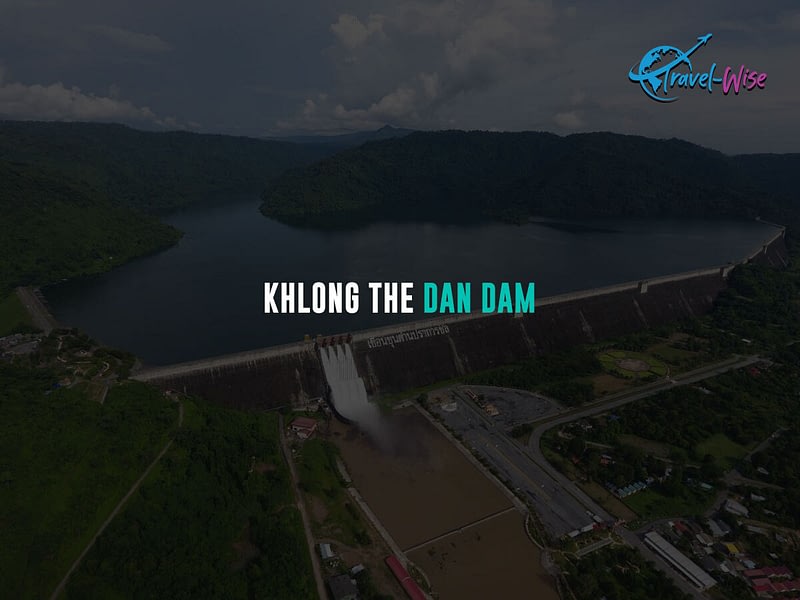
This spectacular dam stands at a height of 93 meters and consumes a significant amount of concrete during construction. The construction team used 5.5 million cubic meters of compact concrete for the dam’s construction. The water dam, completed in 2005, has a length of 2,720 meters.
They named the dam after Khun Dan, a legendary hero who defended Thailand from the Burmese invaders in the 18th century. Khun Dan was also called Phraya Phichai Dap Hak, which means “the broken sword lord” because he kept fighting even after his sword broke in half.
The Khlong, The Dan Dam, irrigates the area around the Nakon Nayok River using the water from the dam. But the area surrounding the dam is lovely, and the nearby park can enjoy the scenery.
Interesting, fun facts about Khlong the Dan Dam
- It is the biggest dam in Thailand and the most prominent and longest roller compacted concrete (RCC) dam globally. It has a storage capacity of 224 million cubic meters, which can supply water for irrigation and domestic use.
- The dam has a unique design that looks like a dragon’s spine. The curved shape of the dam helps to handle the pressure from the water and the earth. The barrier has 11 spillways or openings, which release excess water from the reservoir. When opened, these spillways resemble dragon scales and create a stunning waterfall effect.
- The Khlong, the Dan Dam, is part of a water management and irrigation system covering 1,500 square kilometers. The dam generates no electricity. The method comprises 11 tunnels, nine pumping stations, eight reservoirs, and 200 kilometers of canals. Over 2 million people depend on the system for water in Nakhon Nayok and the nearby provinces.
Best time to visit Khlong the Dan Dam
The best time to visit Khlong the Dan is a spectacular sight in Thailand, especially during the rainy season from June to October. This is when the waterfall reaches its peak flow, creating a mighty cascade of water that plunges into the pool below. You can admire the beauty and force of nature as you watch the water spray and listen to the roar of the falls. The rainy season also brings more greenery and wildlife to the area.
Ecological significance of Khlong the Dan Dam
Also known as the Pak Moon Dam, this dam has raised concerns about its impact on the ecosystem because of changes in water flow and fish migration. This has affected fish and local livelihoods, sparking debates about balancing energy and the environment.
2. Monticello Dam in California, USA
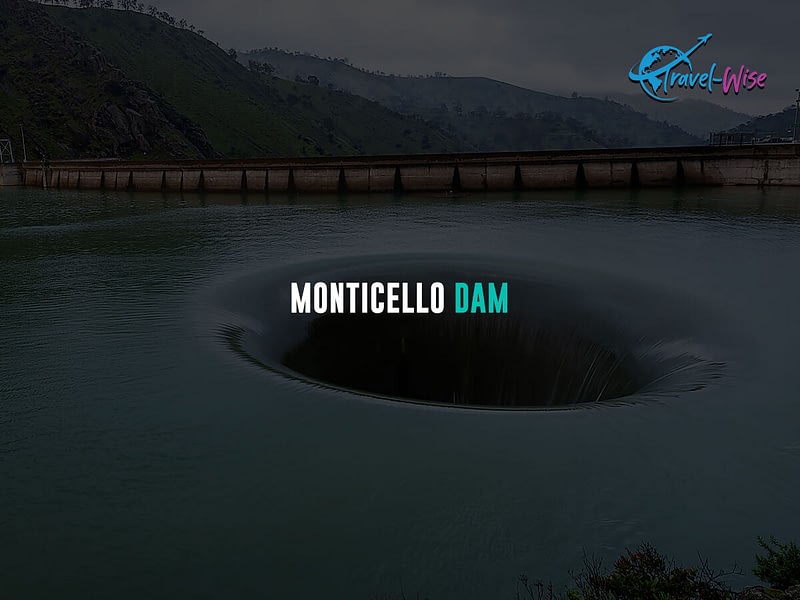
Construction of this concrete vault, or arch dam, began in 1953 and finished in 1957. The dam is in Napa County, CA, and has an alternative nickname of “Priehrada Monticello.” This beautiful dam stands at a height of 93 meters. One of the most mesmerizing dams owing to its spectacular spillway, nicknamed “the Glory Hole,” funnel-shaped. The spillway has a diameter of 22 meters at the tip and is inside Lake Berryessa’s boundaries. The dam irrigates the surrounding agricultural lands and supplies electricity to San Francisco.
Interesting, fun facts about Monticello Dam
- Monticello Dam features the iconic “Morning Glory Spillway,” a circular hole that drains excess water from the reservoir during heavy inflows and prevents flooding. It has a striking visual appearance that resembles a giant drain.
- Morning Glory Spillway has become a popular tourist attraction because of its dramatic appearance. Visitors come to witness this mesmerizing sight, especially when the spillway is active during rainy seasons.
- The hydroelectric facility at the Monticello Dam converts water flow energy into electricity with turbines and generators. This technique creates sustainable energy without polluting the air and provides long-lasting electricity to the area. The dam has a capacity of 11.5 megawatts (MW) of electricity.
Best time to visit Monticello Dam
Visiting Monticello Dam is easy between March and May and September and November because of the pleasant weather. There may be a difference in water levels based on the amount of rain that has fallen recently.
Ecological significance of Monticello Dam
Monticello Dam Reservoir, Lake Berryessa, plays a water supply and flood control role. Water management impacts nearby aquatic habitats and environments downstream, even if it’s not the main ecological focus.
3. Seli’s Ksanka Qlispe in Montana, USA
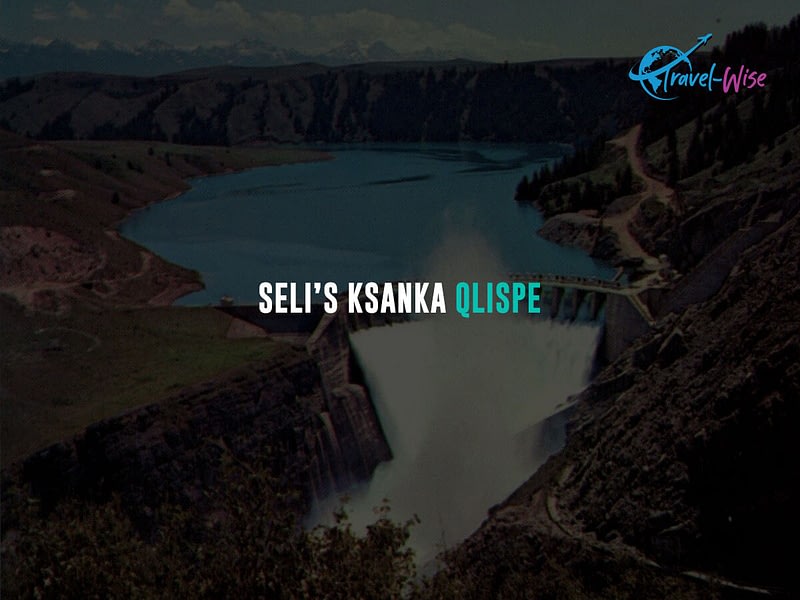
This beautiful dam has a unique name, Kerr Dam. However, the local people who bought the dam renamed it as it is on a Native American reservation. The dam’s reservoir, Flathead Lake, is the largest freshwater lake west of the Mississippi River. Boating, swimming, and relaxing are popular here because of its pristine waters and stunning surroundings. Furthermore, it supports irrigation in the surrounding region and facilitates various recreational activities. The dam also plays a vital role in forest conservation and protecting wildlife resources.
Interesting, fun facts about Seli’s Ksanka Qlispe
- The dam has three units that can generate up to 208 megawatts of electricity each, enough to supply about 147,000 homes. The kinetic energy of flowing water can be converted into electrical energy through hydropower, a clean and renewable energy source.
- This dam is a historical landmark that reflects the New Deal era in the 1930s. It was built as part of the federal government’s efforts to provide jobs, electricity, and irrigation during the Great Depression. The dam showcases the engineering and architectural achievements of that time.
- This dam is more than a structure that blocks the water. It symbolizes the local communities’ heritage, culture, and values. It showcases the region’s natural beauty and provides clean energy for the people. The dam is a source of pride and inspiration for residents and visitors alike.
Best time to visit Seli’s Ksanka Qlispe
There are plenty of recreational activities to try out during the summer months. During the summer, it is a perfect time to visit Seli’s Ksanka Qlispe.
Ecological Significance of Sebi’s Ksanka Qlispe Dam
The dam’s presence affects the Flathead River’s hydrology, affecting fish migration and habitat. Stakeholders are discussing how to keep fish populations and sustain hydropower generation.
4. Gordon Dam in Tasmania, Australia
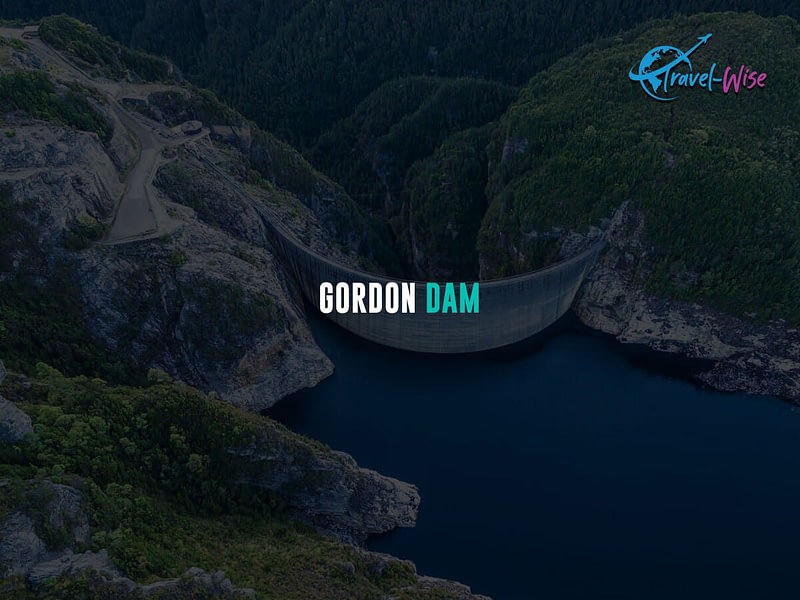
This most incredible dam is an arch dam in Australia, having controlled overflow and double curvature. Its curvature in both horizontal and vertical directions sets this dam apart. This helps resist the enormous hydraulic pressures the water creates in Gordon Lake. The dam construction in Tasmania took four years, starting in 1974 and ending in 1978. It is the highest dam in Tasmania.
Interesting, fun facts about Gordon Dam
- The dam’s water goes down 183 meters to power the plant. The plant has three turbines, each generating 144 megawatts of electricity. Together, these turbines generate up to 432 megawatts, providing about 13 percent of Tasmania’s electricity needs. They commissioned the first two turbines in 1978 and a third in 1988, showing the dam’s significant contribution to its energy supply.
- Gordon Dam has a remarkable acoustic feature. Its colossal size and shape create mighty echoes that amplify any sound. When you clap or shout near the dam, you can hear the sound bounce back and forth between the walls, creating a sonic sensation. Gordon Dam is a place where you can listen to the echoes of nature and yourself.
- The dam features a massive tunnel that can release water when the reservoir is full. Engineers achieved a remarkable feat of engineering when they built this tunnel. It had the world’s most giant concrete tunnel in diameter.
Best time to visit Gordon Dam
Visit Gordon Dam in Tasmania’s summer (December-February) for warm weather and vibrant scenery. See the dam’s reflection on Lake Gordon and explore the nearby national park. Learn about the dam’s history and technology or try adventure activities. Enjoy the local food and wine.
Ecological significance of Gordon Dam
The creation of Lake Gordon had ecological consequences that changed the landscape and habitats of the Gordon River Valley. But hydropower generation from the dam helps reduce dependence on fossil fuels.
5. Vidraru Dam in Romania
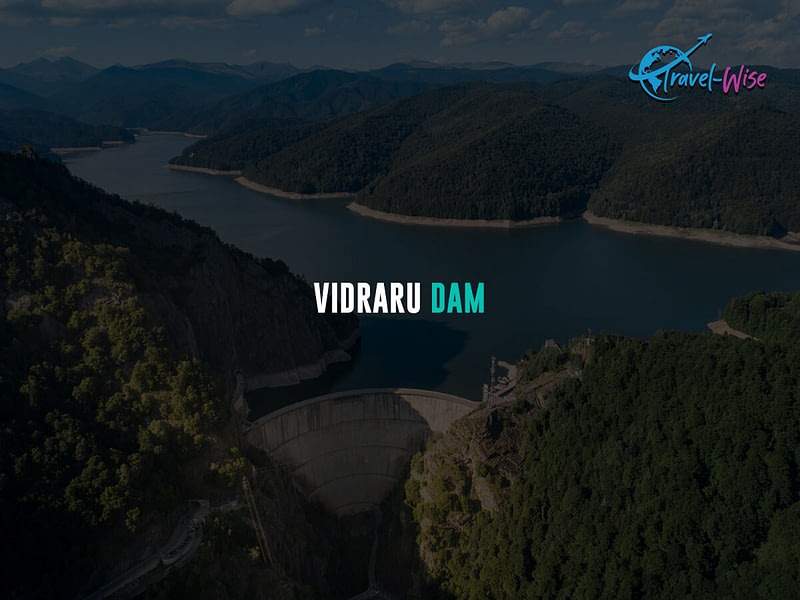
This dam finished construction in 1966 and crossed the river Arges. It is between the Ghițu Mountains and the Frunții Mountains. This arch dam stands at an impressive height of 166 meters. This imposing dam is the highest in Romania and has remarkable views owing to the beautiful lake created by it, Lake Vidraru, and the surrounding woods. The dam holds around 465 million cubic meters of water.
Interesting, fun facts about Vidraru Dam
- The dam is essential to the Transfagarasan highway, a beautiful route through the Carpathian Mountains in southern Romania. The highway is the second-highest paved road in the country and offers breathtaking views of the peaks, valleys, and lakes along the way.
- The dam area is a venue for various events, such as marathons, festivals, and outdoor concerts that draw locals and tourists.
- The Vidraru Dam is a hydroelectric power plant that can produce about 400 GWh of electricity in a medium hydrological year, with an installed capacity of 220 MW. This means that the dam can provide enough electricity for about 100,000 homes.
Best time to visit Vidraru Dam
Late spring to early fall (May to September) offers pleasant weather for exploring the Vidraru Dam in Romania. This course provides an opportunity to enjoy beautiful surroundings and outdoor activities.
Ecological Significance of Vidraru Dam
Although Lake Vidraru is primarily used for power generation and water supply, it still supports aquatic life and contributes to the local water cycle. Careful management is required to maintain an ecological balance.
6. Contra Dam in Ticino, Switzerland
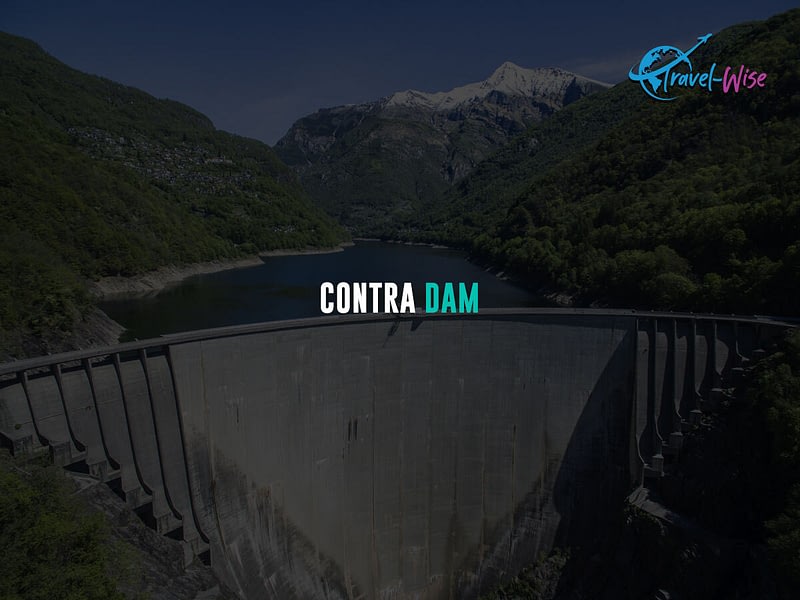
Contra Dam sits on the river Verzasca in Switzerland. Also, it is one of the most incredible dams because of its iconic appearance in the movie Golden Eye. This beautiful arch dam created Vagorno Lake with an annual power generation capacity of about 234 GWh. The dam’s construction took place in 1961 and was completed in 1965. It is 220 meters high and holds about 105,000,000 cubic meters of water.
Interesting, fun facts about Contra Dam
- The Contra Dam is one of the highest dams in the world, with a height of about 220 meters (721 feet). It is also a hotspot for extreme bungee jumping, as it offers a thrilling experience for the adventurous. The Contra Dam is a place where you can feel the adrenaline rush and the beauty of nature.
- The Verzasca Valley is a stunning natural wonder surrounding the Contra Dam in Switzerland. The valley has lush greenery, crystal-clear river water, and charming villages. The valley is a paradise for nature lovers, offering many hiking, swimming, diving, and exploring opportunities.
- The dam is part of a hydroelectric power station producing 234 GWh of energy annually. It has three turbines, each with a capacity of 35 MW, that use water from a reservoir at an elevation of 470 meters. The water flows through a 1.9 km tunnel to an underground station at 193 meters, creating a hydraulic head of 277 meters. The water is then released into Lago di Verbano, a large lake that borders Italy and Switzerland.
Best time to visit Contra Dam
When visiting the Contra Dam, the best time is between May and September when the weather is warm. Mountain views are at their best, and water activities are more enjoyable.
Ecological significance of Contra Dam
The dam’s construction led to a valley’s flooding, which could affect local ecosystems. However, the clear waters of Lake Vogorno have become a habitat for aquatic life, albeit with potential ecological considerations.
7. Hoover Dam in Nevada, USA
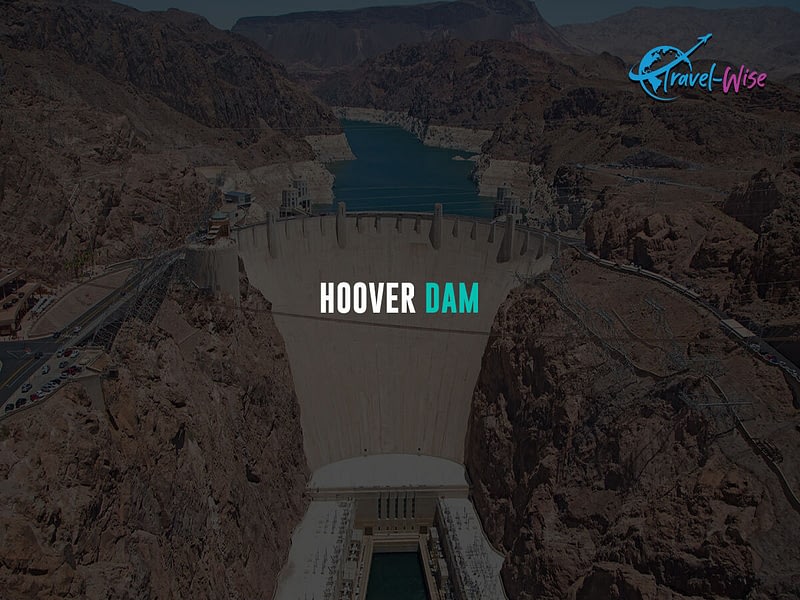
Between Arizona and Nevada, this iconic dam, named Boulder Dam, impounds the river Colorado. It stands at a height of 220 meters and creates Lake Mead. The primary purpose of the dam is to generate hydroelectricity. Construction of the dam began in 1931 during the Great Depression. The Hoover Dam is named after President Herbert Hoover and is recognized as one of the 7 Wonders of the Industrial World.
Interesting, fun facts about Hoover Dam
- The iconic Hoover Dam is a powerhouse annually, generating 4 billion kilowatt hours of hydroelectricity. This enormous amount of energy plays a vital role in meeting the electricity needs of not one but three states: Nevada, Arizona, and California. The combined energy produced by the dam significantly contributes to the daily life of about 1.3 million people.
- The Hoover Dam is a massive concrete structure that spans the Colorado River. It has enough concrete to pave a road from San Francisco to New York City. The dam is an engineering marvel that took five years to build.
- The Hoover Dam previously divided Nevada and Arizona into separate time zones: Pacific Time for Nevada and Mountain Time for Arizona. In 1968, Nevada adopted Daylight Saving Time (DST) while Arizona did not. To simplify matters, the time zone border was moved to the east. The dam and part of Clark County, Nevada, now share the same time zone as Arizona.
Best time to visit Hoover Dam
Visit Hoover Dam in Nevada, USA, in the spring (March to May) or fall (September to November) for mild weather and fewer crowds. Spring and fall are the ideal seasons to enjoy Hoover Dam in Nevada, USA, with comfortable temperatures and manageable groups.
Ecological Significance of Hoover Dam
Damming transformed the Colorado River, affecting river flow and downstream habitats. This led to the formation of Lake Mead, which involved local ecosystems and water access for wildlife.
8. Mooserboden Dam in Austria
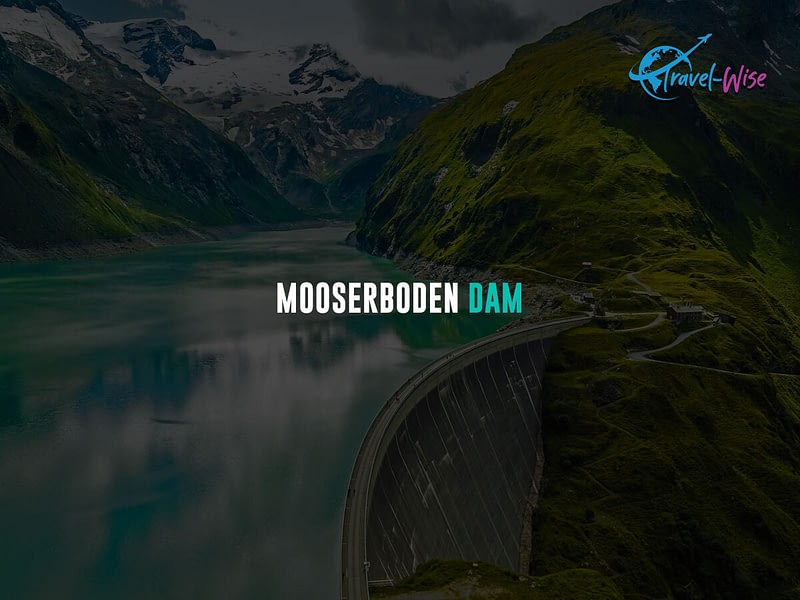
Last, one of the most beautiful dams in the world is in Kaprun in Austria, surrounded by the stunning beauty of the majestic Alps. It is one of the most sought-after destinations in the world. The dam stands at an impressive height of 2040 meters and divides the beautiful Höhenburg Mountains. The construction of the dam started in 1947 and was completed in 1955. Its primary purpose is to generate electricity.
Interesting, fun facts about Mooserboden
- The Mooserboden Dam has a total installed capacity of 353 megawatts (MW), which means it can produce up to 353 million watts of electricity. This is enough to power about 230,000 households in Austria, or about 10% of the country’s population.
- The Mooserboden Dam in Austria’s Hohe Tauern Mountains is an impressive engineering feat that generates electricity from water. It includes the walls of the Moosersperre and the Drossensperre, creating two reservoirs. Mooserboden, the taller and more beautiful reservoir, offers activities such as boating, fishing, hiking, and a glimpse into the history of hydroelectric power.
Best time to visit Mooserboden Dam
Visit Mooserboden Dam in summer (June-September) for mild weather and outdoor fun. Enjoy the blue water, rocky landscape, and snow-capped peaks. Learn about the dam’s history and technology.
Ecological Significance of Mooserboden Dam
The dam’s location in the Alps affects local water systems and the Alpine ecosystem. Management measures play a role in maintaining the ecological balance in the region.
Dams are fascinating engineering marvels that are integral to modern human society. These fantastic structures handle many vital functions, like generating hydroelectric power, providing irrigation and drinking water, and protecting the surrounding area from floods.
Conclusion
Embarking on a journey to explore these magnificent dams promises an enriching adventure. These structures are impressive engineering feats and lead to beautiful natural landscapes. Learn about energy, water, and conservation through the interaction of humans and the environment.
To ensure a seamless and rewarding experience, leverage the power of our modern planning tool. Which can help chart your route, discover accommodations, and uncover nearby attractions. Do more research into each location to see which place you might like to visit, but keep these incredible dams in mind when planning and booking your next trip. Responsible exploration lets you enjoy the beauty and help the environment and local community.

